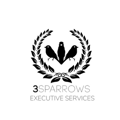The Future of Your Business

Photo by Joshua Hoehne on Unsplash
Set Your Finish Line
Welcome to the first blog in my new series about planning for the future of your business. In this series I’ll explore the importance of four areas to focus on so that you can be confident that the future of your business is on the right track.
- Set Your Finish Line.
- Own Your Business.
- Establish Your Role in the Business.
- Execute the Plan.
It’s my hope through this series that you will create the right pathway for your business so that it is a joy and not a burden.
Let’s jump right in!
Not a New Concept
This approach, setting a finish line or beginning with the end in mind, is not a new concept. It was originally introduced by Stephen Covey for the purpose of setting a clear vision and charting a course toward your desired future state for your business. However, it takes intentional & strategic planning to actually create and then execute a clear vision and a course for your business or else you will be simply hoping for the best instead of proactively working towards a goal.
According to the Small Business Administration, around 550,000 small businesses close each year. In addition, only about half of small businesses survive for five years, and around 33% make it ten years. Finally, only 25% of small businesses survive 15 years or more.
How many of these businesses developed and executed a strong strategic plan? I don’t know but I’m willing to guess most of them didn’t. They probably had a great idea and just opened for business without a plan to create strong margins and scale properly. This is why I’m so passionate about planning. We need small businesses to win in the marketplace for our economy to be strong.
What Does Your Finish Line Look Like?
Imagine you’re running a marathon. Without a finish line, you’d have no idea where to go or when you’ve succeeded. The same principle applies to your business. Defining your finish line is about setting a clear vision of what success looks like for you. This vision serves as a beacon, guiding your decisions and actions along the way.
Now, this doesn’t mean that you can’t “start a new race” once you reach the first finish line or even extend the finish line as you go. The point is, you need something to shoot for or else you will lose momentum and forget why you are actually in business to begin with.
Here are 3 great vision questions to to answer as you start the process:
- What does success look like for your business in 3, 5, 10, 15, or even 20 years?
- How do you want your business to impact your community, industry, or the world?
- What legacy do you want to leave behind?
These questions aren’t just for large corporations. Whether you’re a small business owner, a startup founder, or a seasoned entrepreneur, having a clear vision is essential. Every business starts with a compelling vision.
This process will also be refreshing to your team because there will always be clarity as to where the company is headed. After all, just showing up every day collecting a pay-check with no long term purpose gets old pretty quick. Especially if the job doesn’t pay well. This is a recipe for high turnover and a lot of opportunity costs which will negatively impact your bottom line.
*Affiliate Sponsor see description below
Setting Your Vision
Creating a vision for your business involves more than just dreaming big. It requires a deep understanding of your values, goals, and the environment in which you operate. Here’s how you can start:
- Identify Your Core Values: What principles guide your business decisions? These values should align with your personal beliefs and the mission of your business.
- Define Your Goals: Break down your vision into specific, measurable goals. These could be financial targets, market expansion, product development, or social impact objectives.
- Understand Your Market: Research your industry, competitors, and target audience. This knowledge will help you craft a vision that is ambitious yet achievable.
Real World Example: Apple’s Vision
Let’s look at Apple as an example. Apple’s vision statement says, “To make the best products on earth, and to leave the world better than we found it.” This clear vision has driven their innovation and business strategy for decades. By beginning with the end in mind, Apple has been able to consistently deliver groundbreaking products and maintain its position as a market leader. Because of this statement they don’t get into cost wars with other brands because they use great materials and create an experience that everyone loves.
Developing a Strategic Plan
Once you have a clear vision, the next step is developing a strategic plan to achieve it. Your strategic plan acts as a roadmap, outlining the steps you need to take and the milestones you need to reach along the way.
Steps to Develop Your Strategic Plan
There are a number of ways that you can develop a strategic plan but here are the non-negotiables or else it won’t be strategic or effective.
- Determine Your Current State. In other words, what does your business do well, not do well, what does the market think of you, how financially stable are you, what are the possibilities for your business, etc. You can follow the SWOT process but the bottom line is you need to establish a baseline of where you are now.
- Set Goals: To ensure that your goals are more like wishes or too far off that you’ll never be able to reach them you need to make sure that they are SMART: Specific, Measurable, Achievable, Relevant, and Time-bound. This framework will keep your objectives clear and trackable.
- Develop Action Plans: Break down your goals into actionable steps. Assign responsibilities and set deadlines to ensure accountability and progress. If there are no action plans then the goals will most likely not happen.
- Allocate Resources: Determine the resources (time, money, personnel) needed to achieve your goals. Ensure you have the necessary tools and support to execute your plan. This is where you “put your money where your mouth is” so to speak. As a leader if you are pushing your team to do more, be creative and hit big goals but you are not willing to allocate more dollars then the plan will die and your team will be hopeless.
- Track and Adjust: Regularly review your progress through weekly meetings and certain metrics that lead to production then make adjustments as needed. Staying flexible and being prepared to pivot if circumstances change will create a dynamic working environment that can deal with big things. Everyone, from the top to the bottom of the organizational chart needs to take ownership of their processes and be willing to bring solutions to help solve problems that they identify.
COVID-19
The pandemic took us all by surprise. However, the businesses that survived or even thrived most likely had a strong strategic plan, had resources to adjust, and they were willing to adjust.
For example, restaurants that did not have drive through or delivery services or were not willing to add them had to shut down. Then, a lot of them could not recover because they carried too much debt to handle without revenue.
Another example, businesses and schools who were not willing to “go virtual” were left behind and their services and bottom line suffered or they had to shut down as well.
Having a strong vision and solid strategic plan will allow you to adjust when the market demands it. The pandemic was one example of this and now businesses and organizations who survived and still stayed true to their vision are stronger because of it.
Let’s Wrap It Up
Businesses that have no long-term vision or strategic plan will get stuck in a rut and not be able to adjust and still stay true to their vision when adversity comes.
Beginning with the end in mind is a powerful, and essential, approach to strategic planning. It ensures that every decision and action you take is aligned with your ultimate vision for your business. By setting a clear vision, developing a strategic plan, and staying flexible, you can navigate the challenges of entrepreneurship and steer your business toward long-term sustainable success.
In Part 2 of this blog series, we’ll look at the different types of business owners and how to determine what kind you want to be now and in the future.
Until then, enjoy the process.
Until then, enjoy the process.
Grow more. Risk Less
How I Can Help you Grow More & Risk Less
- Schedule a FREE Strategy Session
- Invest in your key leaders to grow your business with the 3P Bootcamp & Coaching Package
- Business Owners get empowered to grow your business in the Strategic Growth Forum
CoAdvantage helps business owners handle mundane and time consuming tasks like payroll and HR, giving them more time to grow their business. Contact Me today for an introductory meeting.*
*Disclosure: I am an Affiliate partner but only because I believe in the product/service. Please let me know if you have questions or concerns about any of my affiliate partners





